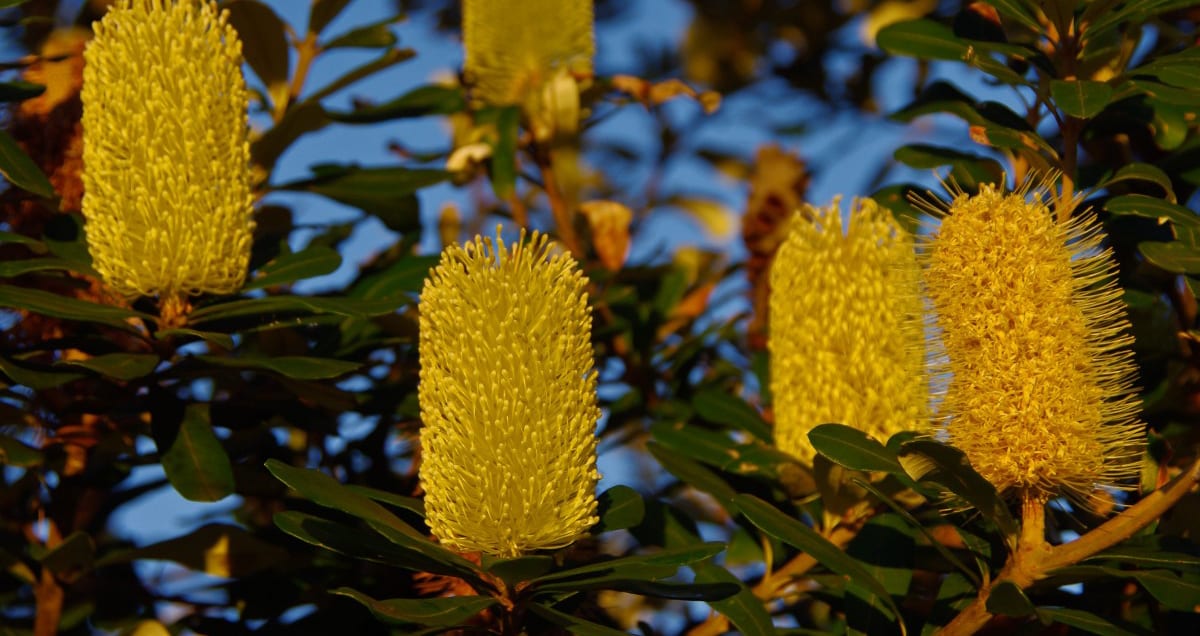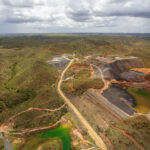Living at this moment in geological time on our hot, dry continent, it would seem that fire is a natural part of the Australian landscape.
Each year, wildfires burn through vast tracts of land during the southern summer and northern dry season, many lit by lightening in places far away from careless cigarette tossers or determined arsonists. For tens of thousands of years, Aboriginal people have strategically used fire to manage their country; to clear it, to stimulate new plant growth and to foster habitat for hunted animals.
Yet a heated debate about how government agencies use fire to manage native vegetation emerges after every catastrophic fire season. Critics of prescribed burning have claimed that while many plant species can survive a fire, there is little scientific evidence that they are specifically adapted to being burnt. Purposely burning plant communities, they argue, is unnecessary and likely detrimental to their long-term survival.
Novel research on the evolution of the Australian flora in the presence of fire by Dr Tianhua He and Emeritus Professor Byron Lamont of Curtin University’s School of Molecular and Life Sciences has shown that – far from being a disturbance that destroys ecosystems – fire has been a major force on the evolution of plants since the Cretaceous, 65 to 100 million years ago.
Discovering that the evolutionary relationship between fire and plants extends deep into geological time confirms that fire is integral to the persistence of many Australian species.
Proving that plants have evolved in the presence of fire has long been problematic. To show that plant characteristics are an adaptation to fire, rather than to co-occurring environmental stresses such as drought, researchers need evidence that the appearance of fire-prone environments preceded the appearance of morphological characteristics in plants that are believed to be an adaptation to fire. The fossil record is of little help: most fossils are deposited in former wetlands, the places least likely to carry a fire. Even if fossils did form in the dry conditions conducive to fires, the evidence of plant adaptation to fire, such as where they store their seeds, or the timing of flowering and the opening of cones, would not be preserved.
Dr He and Lamont instead used pioneering molecular techniques to “ask the plants themselves”. Each unit of DNA within a gene has its own ‘molecular clock’: a constant rate of mutation that allows researchers to determine how closely two species are related and when they separated from their common ancestor. If a species and its sister exist in a fire-prone environment today, then there is a high likelihood that their parent species also lived in a fire-prone environment. The researchers analysed the DNA sequences of 85 species or subspecies of Banksia, five species of the former Dryandra (now included in Banksia), and two rainforest species related to Banksia to construct an evolutionary tree that is calibrated over time, known as a chronogram.
Dr He and Lamont then used statistical probabilities to trace the the evolution in Banksia and its related species back through time to show that two traits related to fire —storing seeds in the canopy (serotiny) and the retention of dead florets (the small flowers that make up a flower head) — were present when Banksia separated from its rainforest ancestors around 61 million years ago. To confirm that these traits are an adaptation to fire rather than drought, they conducted field experiments comparing seed germination and seedling survival in six species of Proteaceae sown into burnt and unburnt areas. Only the seedlings germinated from seeds sown in the burnt areas survived a second summer, mainly due to the greater availability of soil moisture after mature plants died in the burnt areas.
Fire, they concluded, has played a major role in the evolution of Banksia for at least 60 million years.
Further investigation of the evolution of seed storage, seed release and germination traits in a range of families in the Proteaceae from Australia, South Africa and New Caledonia allowed Dr He and Lamont to extend the date for the evolution of fire-prone floras to 88 million years ago. More recent work by the team on pines in the northern hemisphere suggests the influence of fire from 126 million years ago. Their work has made a significant contribution to a global collaboration that has shown that fire is a fundamental process that shapes adaptation and evolution in plants over both ecological and geological time.
The confirmation that plant communities are adapted to persist and reproduce in a fire-prone environment is important for maintaining public confidence in the use of fire as a tool to protect human safety and maintain ecosystem health, says Dr Neil Burrows of the Department of Biodiversity, Conservation and Attractions (DBCA). In the often contentious debate about how and when to use prescribed burning to manage native vegetation, fire management agencies such as DBCA need to be able to assure the public that their fire policies are based on scientific evidence. Dr Burrows emphasises that the broader community perceives fire research carried out by universities to be independent and highly credible.
Both Lamont and Dr He are careful to stress that evidence that a plant community evolved in a fire-prone environment should not be misinterpreted to mean that the community can withstand any combination of fire frequency and intensity (known as the fire regime).
Their work on fire’s role in plant evolution lays the foundation for further — and the more difficult — research to determine the optimal fire regime to promote species diversity and ecosystem health in our native plant communities.
As the climate changes, some regions of Australia will become more fire-prone and others less so. Lamont warns that climate change will have a significant impact on what is the most suitable fire regime for a plant community. Dr He and Lamont’s work has shown that species that have evolved with fire have the capacity to adapt through time to changes in the fire regime, as long as these changes are slow. As rainfall decreases, the minimum time between fires needs to increase if biodiversity is to be conserved. Their research highlights the importance of scientific evidence to underpin sophisticated and ‘fit-for-place’ fire management that maintains the evolutionary potential of Australian ecosystems to adapt and thrive in a changed climate.



